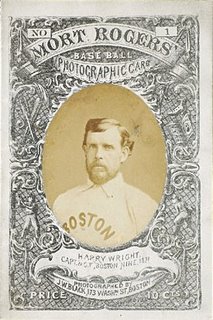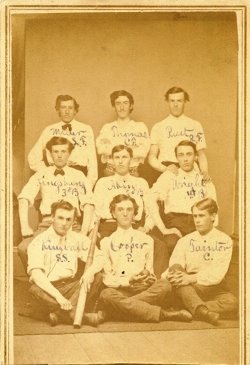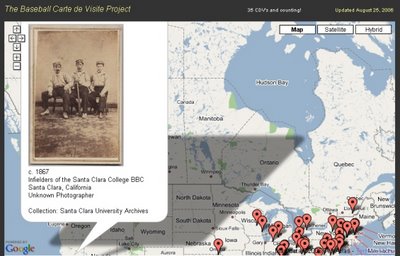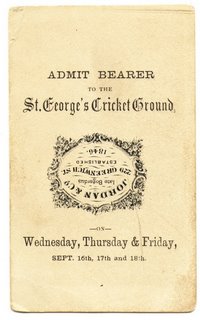The New York Herald, July 15th, 1874.
"The Boston nine, individually is not nearly so strong as at least two other nines, and yet they win more games than any other club. There are several very good reasons for their being constantly at the head of the list.
First of all, there is nowhere in their ranks a man against whose character or honesty of purpose one breath of suspicion can be whispered. They are gentlemen. Besides, they have attained, and continually maintain, a higher degree of discipline than any other club, and, above all, they invariably play to win. The latter cannot be said of all the professional nines now contesting for the championship. Indeed to such a low ebb have the morals of so many professionals players descended that no man can now witness a game between many of the clubs and be sure that both sides are striving to win.
Gamblers buy up one or more players to lose a game and it is lost. Detecting a player in losing a game is next to an impossibility, for they have arrived at such a high degree of perfection in the art of "how not to do it," that a single error at certain stages of the game may throw a victory into the hands of the oposing nine and piles of greenbacks into the pockets of a few blacklegs.
These things are greatly to be regretted, but there is an effectual remedy, and it is in the hands of the public. If men will sell games of base ball by not trying to win, let the public, which supports these cl

ubs, keep away from the games."
Thanks to Harry & George Wright, Albert Spalding, Jim "Orator" O'Rourke, Ross Barnes and Cal McVey, The 1874 Boston club went on to finish first with a record of 52 Wins and 18 Loses.
Spalding, aged 23 at the time, won all of the 52 games. He posted an ERA of 2.35
If you want to see the 1874 Boston Red Stockings Roster and Stats, click here:
1874 Bos Stats
 Here's a nice identification project to jump start the baseball iconography blog.
Here's a nice identification project to jump start the baseball iconography blog.







